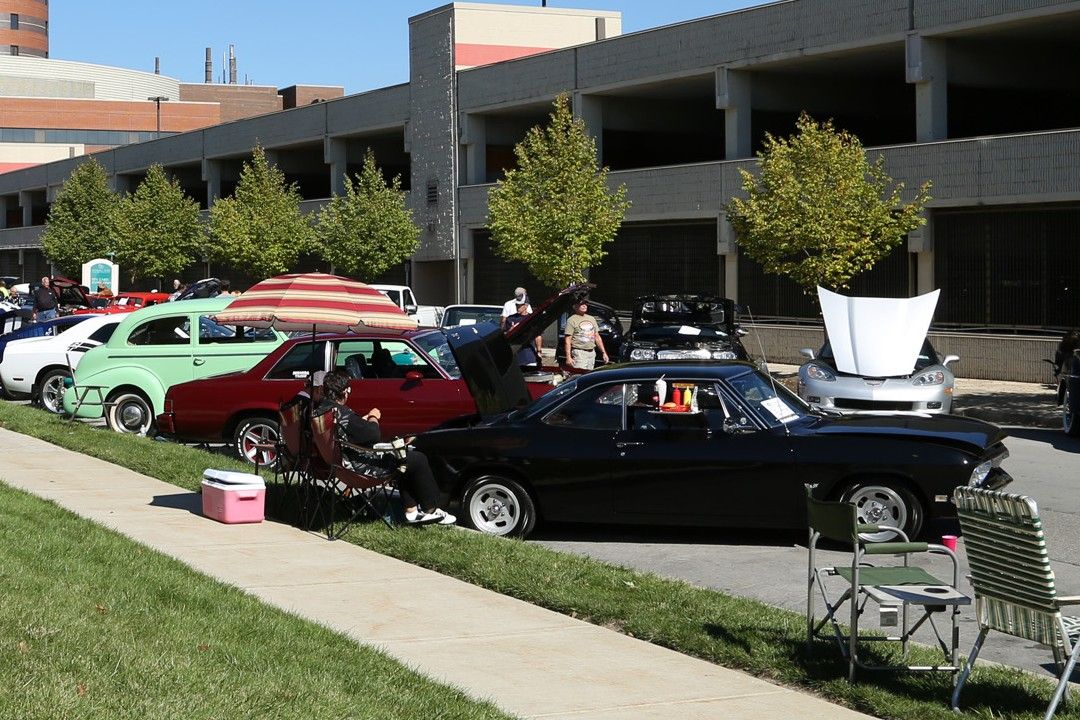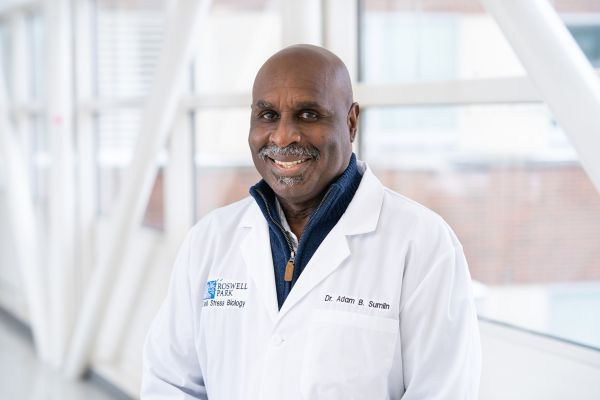More than a decade after his diagnosis and treatment, Richard Satterwhite wants more men to join him in an important club: he’s a prostate cancer survivor.
Satterwhite says there was no history of the disease in his family, but as someone who intends to live to 100 and makes regular medical appointments, he spoke up when something didn’t feel right within his body.
Now a Patient Engagement Specialist at Roswell Park Comprehensive Cancer Center, Satterwhite considers himself lucky that his prostate cancer had symptoms, including erectile dysfunction and urinary issues, because prostate cancer typically is asymptomatic until it is in a later stage and possibly spreading throughout a man’s body.
“I thought it was just an enlarged prostate, which happens as men get older, and it’s typically treated with medication,” he says. “It was discovered that I, indeed, did have prostate cancer. It was a lack of fear in seeing my doctor that helped me find it.”
Prostate cancer rates higher among men of color
Prostate cancer is the second leading cause of cancer-related death among men 40 and older. Black men are 1.6 times more likely than other men to develop prostate cancer and twice as likely to die from the disease. It’s also the most-diagnosed cancer in Hispanic men. However, when caught early, prostate cancer can be cured more than 90% of the time.
Many men might shy away from early detection opportunities because of fear: Fear of finding cancer or fear of the process used to detect it.
Early detection for prostate cancer involves two steps: A digital rectal exam (DRE) and a blood test determine whether a man has an elevated level of prostate-specific antigen (PSA), a biological marker that can indicate a problem with his prostate. The PSA test is a blood test that can be done every year to determine whether the amount of the compound is increasing.
“Men, for some reason, they feel emasculated, less of a man if they have the exam,” Satterwhite says. “There’s a machismo factor, on top of a lot of mistrust, especially among the African-American community, when it comes to medicine in general. Men need to know that they’re in the driver’s seat. Going to see your doctor doesn’t mean they’re going to operate on you; it’s just going to see a doctor, so you know what your PSA numbers are. Once you know that, they’ll be able to follow you from check up to check up so if there’s a change, it can be investigated.”
Satterwhite is one of the founders of Men Allied for the Need to Understand Prostate Cancer (MANUP Buffalo), an educational outreach group that talks with men and their partners about the importance of regular health checkups and routine early detection tests, including for prostate cancer.
The group also is behind Cruisin’ for a Cure Buffalo-Niagara, an event Satterwhite likes to call “the car show that saves lives.” This is the 10th year for the event, scheduled for Saturday, Sept. 25, at Roswell Park. It’s a full day of classic cars, tuners, trucks and motorcycles. It’s also an opportunity to participate in the prostate cancer early detection clinic and receive a DRE and PSA test, free of charge, from Roswell Park urologists and clinical staff. The early detection tests will take place in Roswell Park’s urology department, in private exam rooms, while the car show is going on outside.
“My biggest concern has always been the lack of prostate cancer education,” Satterwhite says. “MANUP Buffalo was formed by a bunch of guys, all prostate cancer patients, who didn’t have the information we needed. We realized if we didn’t have it, other men weren’t getting it either. Our main talking points are about prostate cancer education about the disease and the importance of going to talk to your doctor.”
Early detection means more treatment options
Prostate cancer is very treatable if caught early on, but a man and his doctor need to know his baseline PSA level to determine whether there’s any change. The DRE is the best way for a medical expert to feel the prostate, a small gland located near the bladder, and find any change in shape or size. To encourage men to get checked sooner, Adam Sumlin, PhD, MBA, Assistant Professor of Oncology, is developing an easier, less intimidating and less invasive new kind of test that involves analyzing a urine sample for increased levels of PSA.
Part of the reason Satterwhite and the other survivors called their group MANUP is because it’s commonly used as a way for men to be encouraged to get over their fears.
“Fear of the unknown will kill you. It’s hard to be afraid of something you understand. This is a cancer that disproportionally affects men of color, but no one knows why. The reality is, beyond cancer, there’s high blood pressure, diabetes and other things that impact people of color at higher rates. Because of all of those things, it’s good to have regular checkups. You have to do everything you can to give yourself a decent quality of life.”
Pairing the screening with a car show makes this a fun, family-oriented and friendly event, while creating an opportunity for the significant others in men’s lives to nudge them to take care of themselves.
“Having your wife, partner or significant other there can help push you to come to the car show and take advantage of the early detection clinic,” Satterwhite says. “Besides, women get scraped, prodded and poked in their routine screenings every year, but men won’t get a DRE? Really? Come on, MANUP and take care of yourself!”
For more information on MANUP Buffalo or Cruisin’ for a Cure Buffalo-Niagara, contact Richard Satterwhite at 716-845-1609


